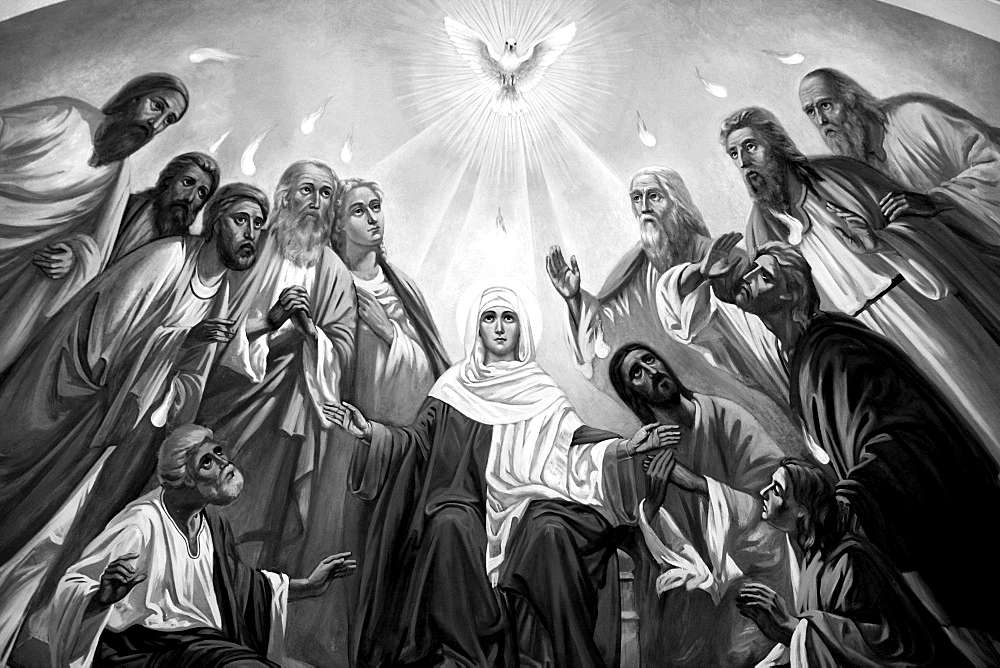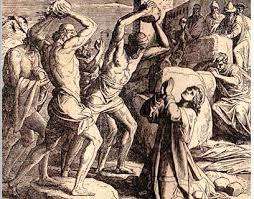

Biblical Theology of Conversion
Dr. Shaibu Abraham
In recent years there has been a significant increase in opposition and violence against any form of Christian mission.
In the name of “forcible conversion,” some right-wing political groups attacks minorities, especially Christians. Furthermore, there have been a plethora of laws passed by state assemblies in the name of “Freedom of Religion” that deter anyone from changing faith. Besides, the Christian practices of divine healing, exorcism, and the use of other charismatic gifts are seen as a form of coercion.
Even without provocation, pastors and missionaries have been attacked and churches have been vandalized. When these incidents occur, the authorities and police often look the other way or even abet the perpetrators of violence. They may also file court cases against Christians under the guise of “forcible conversion.”
In this context, it is important to present the biblical concept of “conversion” in order to clear up any misunderstandings that the general public may have. It is also important to share the good news of Jesus Christ with those who are seeking spiritual transformation, without being accused of forced conversion. Therefore, in the following pages, we will explore the biblical concept of conversion from both OT and NT scripture, selecting few areas to understand what Christians believe and professing today. Here we will see that the genuine biblical concept of conversion is a voluntary act of turning to Jesus Christ in faith, and that it has nothing to do with coercion or manipulation but fully in accordance with the Bible.
Biblical Concept of Conversion: Both the OT and the NT present conversion as a crucial step of God’s saving work for people. The major image used for conversion in the Old Testament is,“turning back” (from sin, to God), and usually conveyed by the Hebrew word šûb,and its derivatives. The basic meaning of the word is to “turn” or “return” or “to turn around” or a change of course in life. The primary theological meaning, however, is to turn to God in repentance. This idea can be seen clearly in Is. 55:7, turning away from immorality and injustice and toward God and in Ezek. 14:6, turning from idols.
Similarly, the New Testament uses the verb epistrephō(“turn back,”“return”), the Greek equivalent of the Hebrew šûb,meaning as spiritual conversion (Matt. 13:15; Mark 4:12; Lk. 1:16-17). A similar term used for“turning” in repentance to the Lord is expressed in the Greek verb metanoein. The word refers to a change of mind, adding the emotional and volitional functions of the intellect, and a sense of remorse resulting from dissatisfaction with prior activity. For instance, John the Baptist called the people to repentance and demanded them to change their attitude and actions (Lk. 3:7-14); his preaching led people to baptism of repentance (Mark1:4-5; Matt 3:5-6).Another metaphor in the NT for conversion is that of birth,such as becoming God’s children (Matt. 18:3), rebirth (1 Pet. 1:3), and being born again or born from above (John 3:3).In these cases, conversion appears to be a definitive and radical change in one’s beliefs and practices and repentance of one’s sinful life.
Although the words “conversion” and “convert” do not occur frequently in the Bible, the basic concept of conversion experience and its doctrines that are fundamental to Christian faith are well defined in the Bible. According to the biblical theology, conversion comprises two vital elements: repentance and faith, both elements inseparable. Repentance is the turning from the former life and faith indicates the turning to God. Repentance implies a conviction of personal sin and an earnest appeal to God to forgive according to his mercy(Ps 51:1,2,10-14). Faith on the other hand, is the astute conviction that through Jesus Christ there is salvation and eternal life. They are the negative and positive aspect of the same occurrence. In a sense, each is incomplete without the other, and each is motivated by the other. As we become aware of sin and turn from it, we see the necessity of turning to Christ for the provision of his righteousness. Conversely, believing in Christ makes us aware of our sin and thus leads to repentance.
Conversion in the Old Testament: As we turn to the Old Testament, the idea of conversion is prominently presented in the national life of people of Israel. As they were settled in Palestine, they began to backslide from the Lord, and began to serve the gods of the surrounding nations and adopted their immoral and evil practices. Then Joshua led Israel in a renewal of the covenant with Yahweh. The central aspect in this event was a call to repentance: “Throw away the foreign gods that are among you and yield your hearts to the Lord, the God of Israel”(Josh. 24:23). Later, Samuel while addressing widespread idolatry,urged Israel to turn away from foreign gods and return to the Lord to serve him (1 Sam. 7:3). Moreover, returning to the Lord in repentance involved mourning,fasting, and prayer (v.6). Later, in 1 Kings 8:33-50 Solomon spoke of “having a change of heart” (v.47a), confession of wrongdoing (v.47b), prayer and supplication (v. 33), turning away from known wickedness (v. 35), and return to the Lord with one’s entire being (v. 48).Then Yahweh would hear from heaven and forgive their sins (vv. 49-50). The same idea can be seen in 2 Chronicles 7:14: “If my people,who are called by my name, will humble themselves and pray and seek my face and turn from their wicked ways, then will I hear from heaven and will forgive their sin and will heal their land.”
As we turn to Psalms, David’s penitential psalm (Ps. 51) stands a paradigm for conversion,i.e. both repentance and astute faith in Lord for remission of sins. David composed the psalm after his sin with Bathsheba and deliberate killing of her husband. After prophet Nathan’s warning, David realised his guilt and repented instantly. We can find the following elements here; first of all, David expressed awareness of his sins (vv. 1-3). Secondly,he offered heart-felt confession of sins (vv. 4-5). David wholeheartedly acknowledged to the Lord both the specific sins of which he was guilty (vv. 3-4) and his inherently sinful condition (v. 5). Thirdly, David showed a true attitude of contrition, reflected through the“broken spirit” and “a broken and contrite heart” (v.17). Fourthly, he expressed his repentance and sorrow through a prayer for pardon of sins (vv.7-9), pleading God to “cleanse” and “wash”him. Fifthly, David sought for a profound inner renewal (vv.10-12):he prayed, “Create in me a pure heart, O God, and renew a steadfast spirit within me” (v. 10). Finally, David experienced the joy that comes from deliverance from sin and its consequences (v. 12).
In prophetic literature, themes of repentance and conversion are dominant motifs (Isa. 31:6; 44:22; Ezek. 18:30, 32; Hos. 3:5; Zech.1:3), especially in Jeremiah (Jer. 3:14; 18:11; 25:5; 26:3; 35:15; 36:3).The Lord through Jeremiah commanded to the people:“Circumcise yourselves …. remove the foreskins of your hearts, you men of Judah and people of Jerusalem” (4:4).The prophets renounced mere mechanical and ritual forms of repentance (Isa.1:11; 29:13; 58:5; Jer. 14:12; Hos. 7:14). True repentance consists of acknowledging one’s guilt (Jer. 3:13), remorse for sins (Jer. 31:19; Ezek.36:31; Jonah 3:8a), forsaking evil thoughts and deeds (Isa. 55:7; Ezek. 14:6;Jonah 3:8b), turning to the Lord with the whole being (Isa. 55:6; Joel 2:12), and reflecting the change of heart (Hos. 12:6; 14:2). In response to genuine repentance, the Lord would withhold punishment (Jer.26:3), forgive the sins (Isa. 55:7), and grant life (Ezek. 33:15-16). Those who failed to repent would face divine judgment (Ezek. 33:8-11, 14).
Above all, the prophets indicated that repentance is an enablement of God; the sinners themselves cannot turn from sins and produce saving faith. Consequently, Jeremiah mentions Ephraim’s petition: “Restore me, and I will return, because you are the Lord God” (Jer. 31:18). Moreover, Lord promised that he would create a new heart among them (Jer. 24:7) and he would make a “new covenant” (v. 31) which would change the human heart (v. 33).Furthermore, Lord would send his Spirit and carry out regenerating work. The same regenerative work of Spirit is explained in Ezekiel 36:24-27.
Conversion in the New Testament: The gospels portray Jesus’ ministry and his call to conversion,“Repent and believe the good news” (Mark 1:15). Here we see both repentance and faith. Jesus showed the pattern of conversion by placing a little child among his disciples,“Unless you change and become like little children, you will never enter the kingdom of heaven” (Matt. 18:3). In the parable of the lost son (Luke 15:11-32), Jesus explained a model for conversion. The younger son’s journey into a far country with his share of wealth signifies humankind’s rebellious departure from God (vv. 13-16). Here conversion consist of awareness of one’s lost condition (v.17), honest confession of personal sins and guilt (vv.18, 21), acknowledgment of one’s utter unworthiness before a righteous God (v.19), and the determination to return to the Father’s house (vv.18-20a). The Father anticipated the lost son's return and accepted him with undeserved mercy and love (vv. 20b-24).
The story of Jesus’ anointing by a sinful woman (Lk 7:36-50) similarly shows the nature genuine conversion. The woman’s tears proved her repentance about her past sins; her gift of perfume was a sign of her faith in Jesus as Messiah. Her action was evidence of genuine love for Jesus. As a result of her repentant heart and genuine trust, Jesus forgave her sins and declared her as a saved person.
As we turn to the book of Acts, we find the conversion experience of the Apostle Paul(Acts 9:1–20, 22:1–21 and 26:2–23), showing that Paul’s Damascus Road experience was decisive in the first century churches. He was a Jew by birth, circumcised according to the law and was raised in cultural and religious purity. Besides, he belonged to the strict sect of the Pharisees and was a zealous persecutor of the church. In Phil 3:6, Paul claims that he was blameless in his observance of the law. Out of his zeal for his religious heritage, he was on his way to Damascus to persecute and kill Christians, but his encounter with the risen Christ totally transformed him. Overcome by the power and grace of Christ, Saul repented of earlier life and trusted in Christ. After Ananias had laid hands on Saul, he was filled with the Holy Spirit (v.17) and was baptized (v. 18) and received the unique call as a“chosen vessel”to be a witness for what he was trying to destroy – Jesus the messiah and his followers.
Additionally, as a result of his conversion experience, Paul’s life and vocation were completely transformed. His early Jewish life, his dependence on Jewish tradition and law, and everything that he once considered as gain, he now considered as rubbish and loss (Phil 3:7–8). Paul’s encounter with the risen Christ brought about a paradigm shift in his theology. He became an apostle to the Gentiles and understood that they were now included in the people of God, as Paul wrote in Galatians 3:28, “There is neither Jew nor Gentile,…for you are all one in Christ Jesus.” Paul also realised that through Christ, Gentiles became part of the commonwealth of Israel and that Jews and Gentiles joined together in Christ to form a holy temple in the Lord, a dwelling place of God (Eph. 2:12-20).
In Pauline epistles, the concept of conversion is vividly portrayed. Paul spoke of conversion as “turn[ing] to God from idols to serve the living and true God”when he wrote to the Thessalonian believers (1 Thess. 1:9). Christian conversion is a turning from evil (cf. 2 Cor. 12:21)to God in devotion and service (cf. 2 Cor. 3:16). The apostle taught that true repentance (turning from sin) involves the emotional element of sorrow for misdeeds. Thus, his painful letter to the Corinthians stimulated a “godly sorrow” that led to repentance unto salvation (2 Cor. 7:9-11). Besides, in Paul’s writings faith is explained as belief in the truths of the Gospel and total trust in Christ. The saving faith is the correct beliefs concerning the person and work of Christ (2 Thess. 2:13; cf. Titus 1:1). To be saved and to become a Christian one must believe the fact of Jesus’ atoning death (1 Cor. 15:3; 1 Thess. 4:14),resurrection (Rom. 10:9; 1 Cor. 15:4, 17; 1 Thess. 4:14), and divine lordship(Rom. 10:9). And the saving faith comes through hearing and understanding the Gospel (Rom. 10:14, 17; 1 Cor. 15:1-2, 11).
Summary: The brief examination of biblical literature above shows that conversion is a voluntary act in which a person wholeheartedly rejects his former way of life and turns to God for salvation. It involves repenting of sin, abandoning false gods and evil practices, and surrendering to God in faith through Jesus Christ. Conversion leads to regeneration, or a change of nature, as the Holy Spirit gives the person new life. This new life is characterised by the liberation of the human will from its bondage to sin and evil. Rather than the old self of sinful disposition, attitudes, and impulses, a new being emerges, including a new heart, mind, and will. In the words of Paul, “If anyone is in Christ, they are a new creation; the old has passed away, and the new has come” (2 Cor 5:17).
Additionally, the new nature is one of holiness and righteousness, as Paul writes, “Put on the new nature, created after the likeness of God in true righteousness and holiness” (Eph. 4:24). Love is a vital element in the life of the reborn person, and it identifies a person as genuinely “converted.”What the Apostle John states is apt,“He who loves is born of God and knows God. He who does not love does not know God; for God is love” (1 Jn 4:7-8).
Thus, if the biblical concept of “conversion” means a voluntary act in which a person abandons their old self and puts on a new nature, then the allegation of “forcible conversion” cannot be applied to a person who becomes a genuine Christian. Again, conversion is not merely changing one’s religion or old way of life, but producing love, righteousness, holiness, self-control, mercy, and long suffering, thus becoming like Christ (Phil 2:5ff). These genuine godly natures cannot be attained through merely changing one’s religion or being a part of a church or any new organization. It requires total surrender of one’s will and total being to become a transformed person. Therefore, the label of “forcible conversion” does not stick to those who genuinely follow Jesus Christ. This concept of conversion is what Christians profess and practice in India.


















